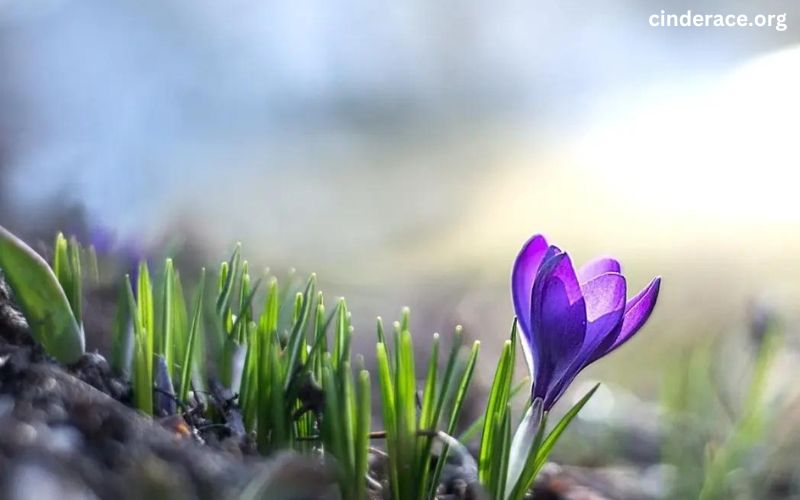The first day of spring is an eagerly anticipated event that marks the end of winter and the beginning of a season filled with new life and growth. It is a time when nature awakens from its slumber, and the world is filled with vibrant colors and sweet fragrances. As the days become longer and the temperatures rise, people everywhere rejoice in the arrival of spring. But when exactly does spring begin? This article explores the different definitions, cultural significance, and historical origins of the first day of spring.
The astronomical and meteorological definitions of the first day of spring
The first day of spring can be defined in two different ways: astronomically and meteorologically. Astronomically, the first day of spring is determined by the vernal equinox, which occurs around March 20th in the Northern Hemisphere. On this day, the sun crosses the celestial equator, and day and night are approximately equal in length. Meteorologically, the first day of spring is defined as the beginning of a three-month period that is considered to be the warmest time of the year. In the Northern Hemisphere, this period typically begins on March 1st.
The significance of the first day of spring in different cultures and traditions
The first day of spring holds great significance in various cultures and traditions around the world. In many ancient civilizations, the arrival of spring was celebrated as a time of renewal and rebirth. For example, the ancient Egyptians celebrated the festival of Shemu, during which they honored the god of the sun and prayed for a bountiful harvest. In Persian culture, the first day of spring, known as Nowruz, is celebrated as the New Year. This vibrant festival involves feasting, dancing, and the exchange of gifts.
The history and origins of celebrating the first day of spring
The celebration of the first day of spring can be traced back to ancient times. In ancient Rome, the festival of Lupercalia was held in mid-February to ward off evil spirits and purify the city. As Christianity spread, the festival was replaced by St. Valentine’s Day. Similarly, the pagan festival of Ostara, which celebrated the arrival of spring, was incorporated into the Christian celebration of Easter. Today, the first day of spring is often associated with Easter, a holiday that symbolizes rebirth and new beginnings.
How the first day of spring is determined each year
The first day of springs is determined each year based on the position of the Earth in relation to the sun. As mentioned earlier, astronomically, springs begins on the vernal equinox, when the sun is directly over the equator. Meteorologically, the first day of spring is determined by averaging temperatures over a period of time. This allows meteorologists to predict when the warmest part of the year is likely to begin. However, it is important to note that the exact date of the first day of spring can vary depending on geographical location and other factors.
Common symbols and rituals associated with the first day of spring
Throughout history, the first day of spring has been associated with various symbols and rituals. One of the most well-known symbols is the spring equinox egg, which represents fertility and new life. Many cultures also have a tradition of spring cleaning, which involves thoroughly cleaning one’s home to welcome the new season. Another common ritual is the planting of seeds or the decorating of a Maypole, which symbolizes the return of life and abundance.
Activities and events to celebrate the first day of spring
There are countless activities and events that people can participate in to celebrate the first day of spring. One popular activity is visiting a local garden or park to enjoy the blooming flowers and budding trees. Many communities also organize spring festivals, which feature live music, food vendors, and various forms of entertainment. Additionally, some people choose to celebrate the first day of spring by engaging in outdoor activities such as picnics, hiking, or simply taking a leisurely walk in nature.
The first day of spring in different parts of the world
While the first day of springs is generally celebrated around the same time in many parts of the world, there are some variations depending on geographical location and cultural traditions. For example, in Japan, the first day of spring is marked by the blooming of cherry blossoms, and the country celebrates this event with hanami, or flower viewing parties. In India, the first day of spring is celebrated as the festival of Holi, during which people throw colored powders and water at each other to celebrate the arrival of spring.
Fun facts and trivia about the first day of spring
Here are some fun facts and trivia about the first day of spring:
- The first day of spring is known by different names in different cultures. In Sweden, it is called “Vårdagjämning,” while in Ireland, it is known as “Lá Féile Earrach.”
- The word “equinox” comes from the Latin words “aequus” and “nox,” which mean “equal” and “night,” respectively.
- The first day of spring is one of only two days in the year when the sun rises due east and sets due west.
- The first day of spring is also the first day of the astrological sign Aries, which is associated with courage and determination.
- The first day of spring is celebrated as a national holiday in many countries, including Iran, Albania, and Turkmenistan.
Conclusion
The first day of spring is a magical time that symbolizes the renewal of life and the promise of warmer days ahead. Whether you celebrate it through ancient traditions or modern festivities, the arrival of spring is a cause for joy and celebration. So, mark your calendars and embrace the beauty of nature as it awakens from its winter slumber. Welcome the first day of spring with open arms and let the spirit of renewal inspire you to embrace new beginnings in your own life.













